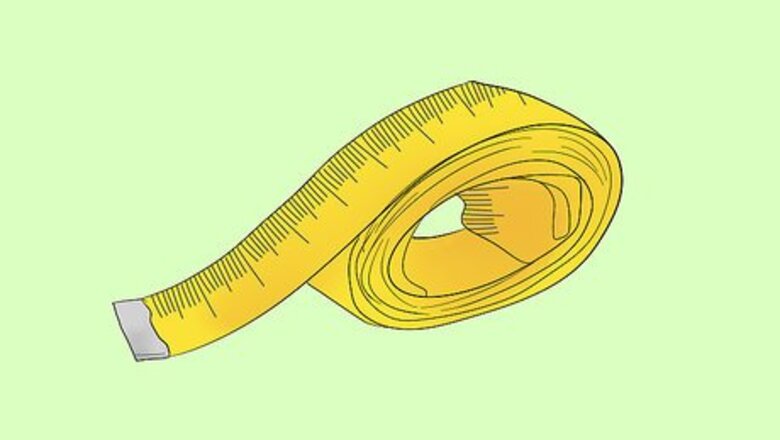
views
Gathering Measurements

Grab a long, flexible measuring tape. Typically, you'll need one that's at least 70 inches (180 cm) long if possible, but if you can't find one, you can always continue measuring from the point where the tape ends. Look for this type of measuring tape at sewing and craft stores. If you don't have a flexible measuring tape, you can use a piece of string or yarn instead.
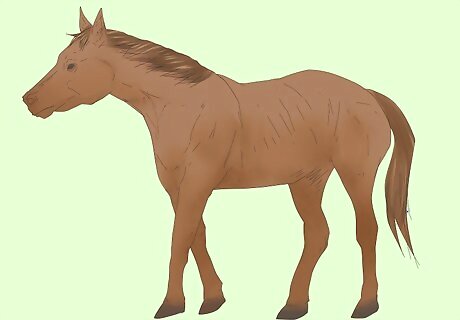
Pull your horse over to level ground. If your horse is standing on uneven ground, that can cause the measurements to be off. Make sure it has all four feet evenly on the ground so you can get a good measurement. If your horse's stance is uneven, have it move forward a pace or 2 to see if that gets it to stand up straighter.
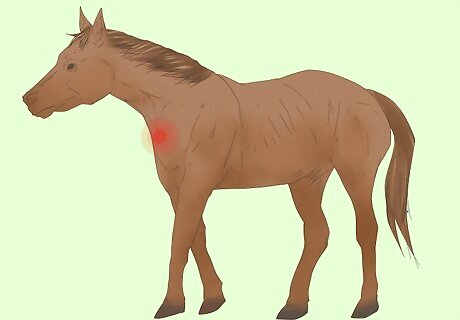
Line up the end of the tape measure with the center of the horse's chest. It doesn't have to be perfect but try to get it as close to the center as you can. Hold it in place as you move along the side of the horse. To make it easier, you can have someone hold the tape measure at this end while you move around the horse.

Wrap the tape measure around the horse to its tail. If you're measuring the horse yourself, hold the tape measure in place with your left hand as you run the other part of the tape along the horse with your right (or vice versa). Once you have the next part in place with your right hand, you can drop what you're holding with your left. Then, allow your left hand to take over the part your right is holding. Keep moving down the horse this way until you hit its tail. If you have 2 people, you can just have the person hold one end at the horse's chest while you pull it taut around the horse to the tail. If you're using a piece of string, just hold it up to the horse like you would the measuring tape and then mark the length on the string with a marker.
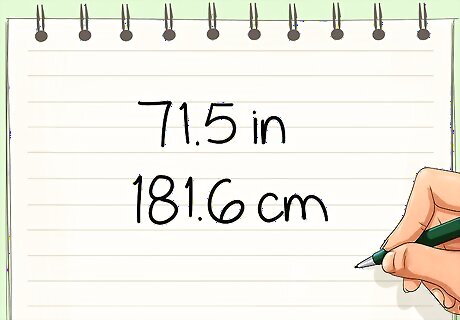
Mark down your measurement. Note the length from the horse's chest to the edge of its tail and write it down for later. Mark it down in both inches and centimeters just in case the company you buy a blanket from prefers one over the other. If you're using a string, lay it against a regular tape measure or even a ruler to see how long it is.
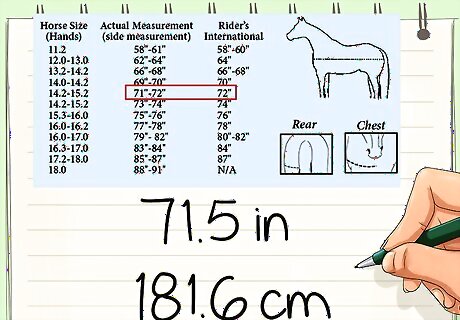
Compare your measurement to the company's sizing charts. Each company has its own sizing charts, so you'll need to look up the measurement you took. Typically, the sizes are listed in inches or centimeters. All you need to do is find the one that best fits the measurement of your horse. If your horse is between sizes, get the bigger one.
Checking the Fit of the Blanket

Try the blanket on the horse to see if it fits snugly around its chest. After sliding the blanket over your horse, buckle it in the front at its chest. It shouldn't be so tight that it restricts movement; you should be able to slide a hand under it. However, it should be tight enough that the blanket isn't moving around all over the place. The blanket should fit just behind the withers. The withers is the ridge where the shoulder blades meet, the highest point on your horse's back. If a blanket is too small, it will rub and chafe your horse. If it's too big, it can slip down and get tangled up in its legs.
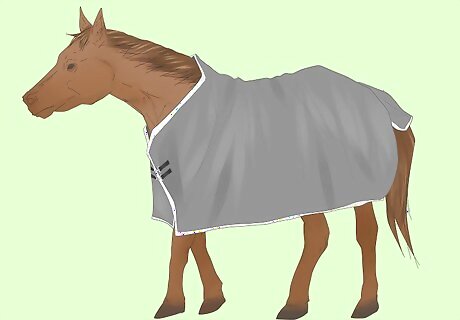
Ensure the blanket goes to the tail and provides protection on your horse's sides. When the blanket is on the horse, it should cover the main part of its body, including the sides and thighs. Also, watch your horse as it moves; make sure the blanket doesn't cause difficulties by restricting leg movement. Step back and look at the blanket. It should be at an even length all the way across the horse. If it's not, something isn't fitting right.
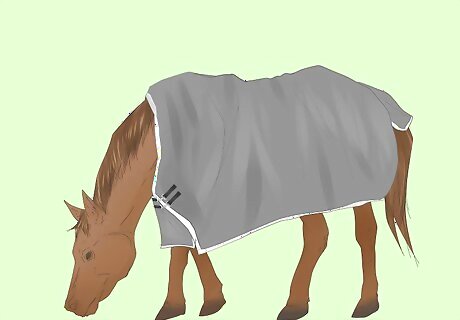
Observe your horse while it's grazing to make sure it isn't restricted. Your horse shouldn't have trouble leaning down to graze. If it does, the blanket is likely too tight, and you'll need to get a bigger size.
Deciding on a Blanket Thickness and Type

Choose a lightweight/sheet for cooler, rainy weather. This type of blanket won't provide much protection if the weather is really cold. However, it will help keep the rainy, wet weather off your horse so it doesn't get chilled by the dampness. A lightweight blanket doesn't have any filling at all, while other weights will.
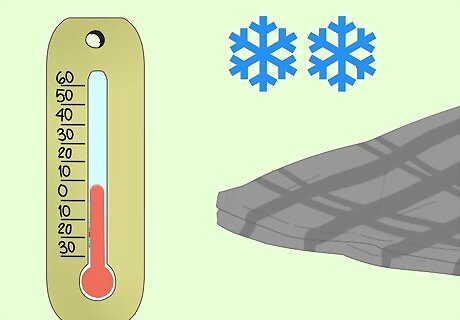
Pick a medium weight for temperatures just below 45 °F (7 °C). These blankets provide some warmth, but they aren't for extreme cold. This category actually includes a range of weights, so check the temperature rating on the blanket to help determine whether it will be warm enough for your area. You can also look at the weight of the filling, which is always based on grams. A medium weight blanket is generally 180 to 200 grams.
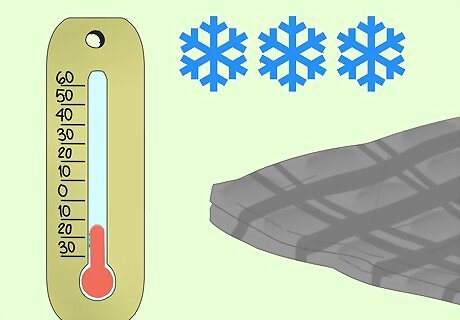
Opt for heavyweight for colder temperatures. A heavyweight blanket is the best option when the weather gets really cold. Typically, the filling on these blankets range from 300 grams to 420 grams of fill. For very cold weather, aim for the higher end of the filling rates, 420 grams.
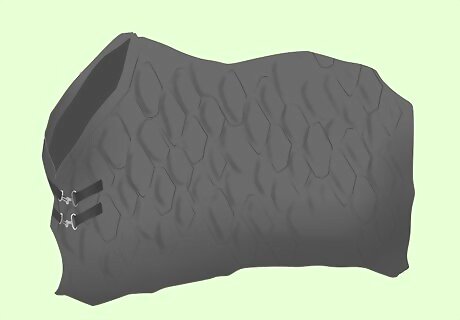
Choose a higher fabric sizing on the outer shell for increased durability. The sizing for the outer shell is referred to as denier. The higher the number, the tougher the fabric. Aim for at least 600 denier for a moderately tough blanket. However, if your horse is hard on blankets, aim for the higher end, which is in the 1200 denier to 1680 denier range. While these are more expensive, they will put up with more abuse. When looking at fabrics, opt for ballistic nylon, as it's the strongest.
Knowing When to Use a Blanket
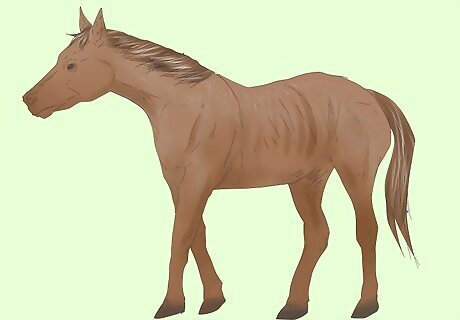
Blanket horses that are old, ill, or otherwise vulnerable to the cold. Just like humans, horses are more susceptible to the cold when they aren't feeling well. Similarly, senior horses don't deal as well with the cold as younger horses. Another instance where your horse might need a blanket is if it's skinnier than it should be, as it won't have the fat to keep its body heat in.
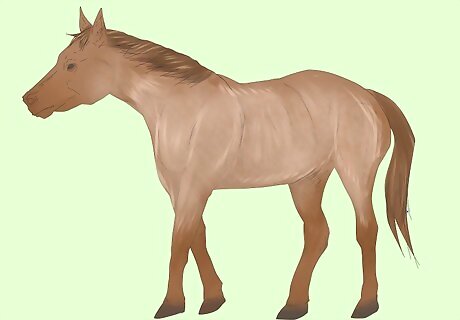
Give clipped horses blankets to provide warmth. If your horse has clipped hair, then it will have trouble maintaining its body temperature. In that case, you always need to provide a blanket when the temperatures dip so that it doesn't get too chilly.
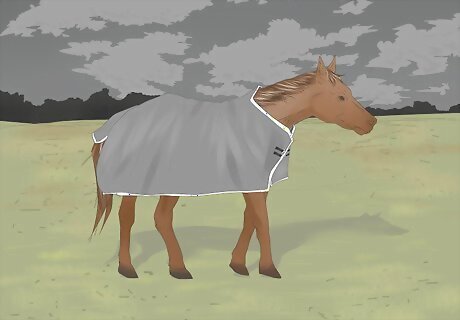
Put blankets on horses that live outside in severe weather. If your horse is outside all the time, it will need a blanket when the weather gets bad. Though a horse warms up when it's moving, it needs to rest at times, and then it's core body temperature can drop too low. Similarly, if your horse isn't used to the cold because it's recently moved from a warmer area, it will also need a blanket.
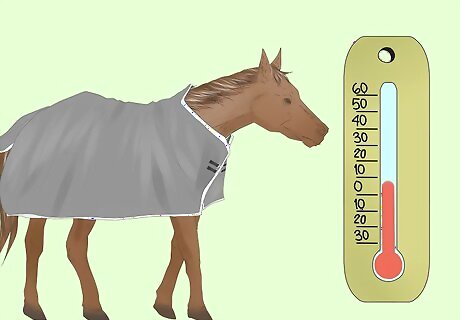
Provide a blanket to vulnerable horses when the temperature goes below 50 °F (10 °C). Typically, below this temperature, it's cold enough for your horse to need a little extra warmth. Over this temperature, your horse could overheat, so make sure to only leave it on when the temperature dips. Healthy horses with a full coat may be fine down to 10 °F (−12 °C). However, always keep an eye on your horse. If it's shivering, it's too cold and needs a blanket.




















Comments
0 comment